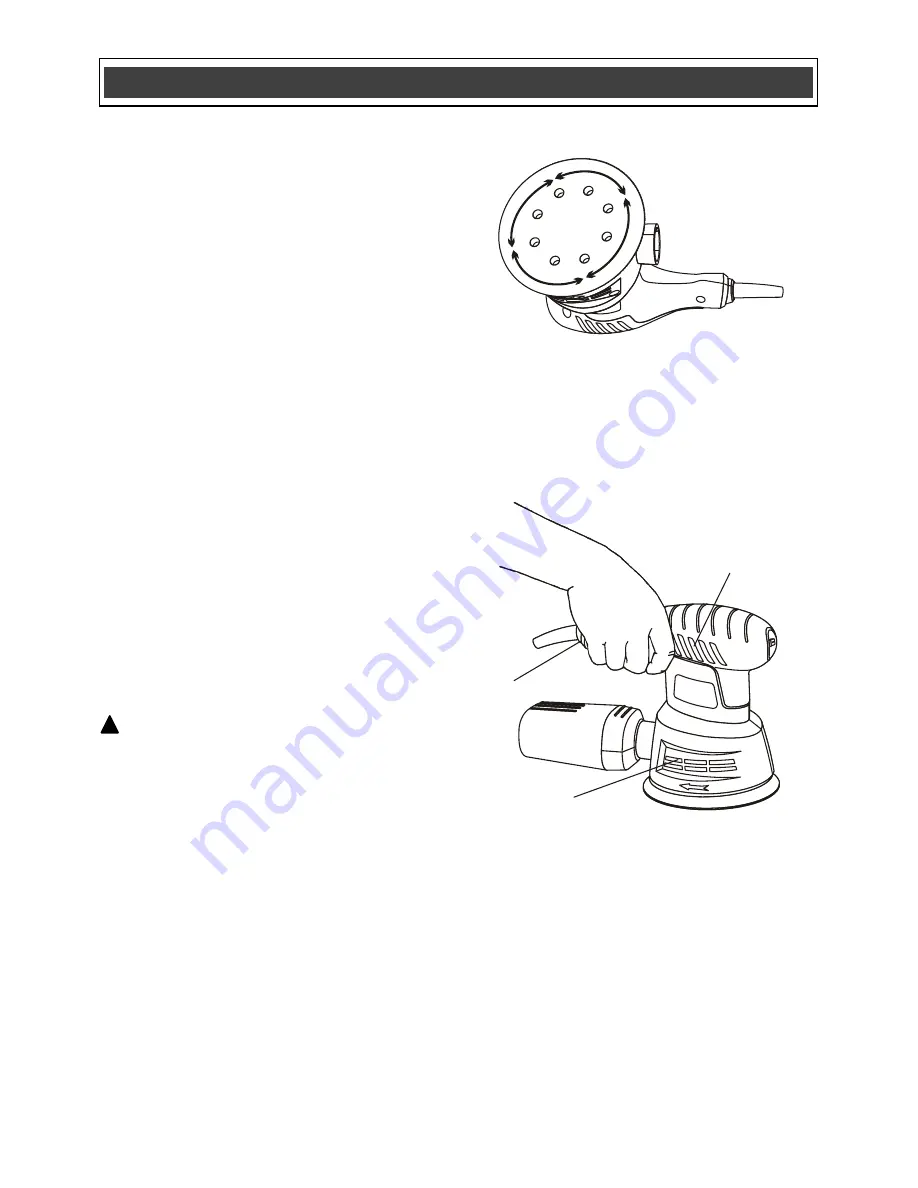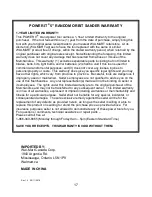
13
SANDING DISC SELECTION
– cont’d
Selecting the correct grit and type of sandpaper
is extremely important in achieving a high
quality sanded finish. Aluminum oxide, silicon
carbide and other synthetic abrasives are best
for power sanding.
Natural abrasives such as
flint and garnet are too soft for economical
use in power sanding.
In general, coarse grit will remove most material.
Fine grit will produce the best finish in all
sanding operations. The condition of the surface
to be sanded will determine which grit will do the
best job.
NOTE:
Where the sanding disc grits are shown
numerically, higher numbers indicate finer grit
and lower numbers indicate coarser grit.
If the surface is rough, start with a coarse grit
and sand until the surface is uniform. Medium
grit may then be used to remove scratches left
by the coarser grit. Fine grit should be used for
finishing the surface. Always continue sanding
with each grit until the surface is uniform.
SANDING
Clamp or otherwise secure your workpiece to
prevent it from moving under the sander while
being sanded. Secure the workpiece in a vice if
possible.
WARNING:
Any unsecured workpiece could
be thrown toward the operator causing injury.
Set the speed control to the desired speed.
Higher speeds tend to cut faster and produce a
smoother finish. Place the sander on the
workpiece so the complete sanding disc surface
is in contact with the workpiece. Turn the sander
ON by pressing on the right hand side of the
ON/OFF switch. Move the sander slowly over
workpiece making successive passes in parallel
lines, circles or crosswise movements. Because
the random orbital motion of the sanding disc
moves in tiny circles, it is not necessary to move
the sander with the grain or in the same
direction for successive passes (Fig. 7).
NOTE:
Hold the sander using the handle (1) on
top of the sander (Fig. 8). Be careful NOT to
cover the cooling vents (2) with your hand.
Covering the cooling vents could cause the
motor to be damaged by overheating.
ASSEMBLY AND OPERATING
Fig. 7
Fig. 8
1
2
2
!

















